The shoulder’s exceptional range of motion is both its greatest strength and its primary vulnerability. Because of its design, the joint is susceptible to instability, particularly in active individuals and athletes. Fortunately, shoulder instability can often be prevented—or its risk significantly reduced—through targeted strategies that enhance strength, control, and joint awareness.
Whether you’re involved in sports, heavy lifting, or simply want to protect your joints as you age, understanding how to prevent shoulder instability is a smart investment in long-term health.
Why Prevention Matters
Once a shoulder becomes unstable, the likelihood of recurring dislocations increases dramatically—especially in younger, active individuals. Even a single traumatic event can weaken the ligaments and stretch the capsule, setting the stage for future issues.
Proactive measures not only lower the risk of injury but also improve performance, posture, and joint longevity.
1. Strengthen the Rotator Cuff
The rotator cuff—a group of four muscles and their tendons—plays a key role in keeping the shoulder stable during movement. Weak or unbalanced rotator cuff muscles make the joint more prone to slipping or shifting.
Key Exercises:
- External and internal rotation with resistance bands
- Dumbbell scaption (raising arms at a 30° angle from the front)
- Prone Y and T lifts
- Isometric holds
These should be performed with proper form and gradually increasing resistance.
2. Train the Scapular Stabilizers
The shoulder blade (scapula) is the foundation of shoulder movement. When it moves improperly, the entire joint is affected.
Strengthen Muscles Like:
- Serratus anterior
- Trapezius (upper, middle, and lower)
- Rhomboids
Exercises to Try:
- Wall slides
- Scapular retractions with bands
- Push-up plus
- Shoulder shrugs (controlled)
Good scapular mechanics reduce unnecessary strain on the joint and distribute movement more efficiently.
3. Improve Proprioception and Neuromuscular Control
Proprioception is your body’s ability to sense movement and position. Enhancing this sense can reduce the likelihood of movements that trigger instability.
Training Techniques:
- Closed-chain exercises like planks or wall walks
- Stability ball drills
- Balance board shoulder taps
- Eyes-closed shoulder control drills
These help retrain the body to recognize and respond to positions that might put the joint at risk.
4. Warm Up Properly Before Activity
Jumping into intense activity with cold muscles and stiff joints is a recipe for injury.
Effective Warm-Up Routines Should Include:
- Light cardio to increase blood flow
- Dynamic stretches for the shoulders and upper back
- Light resistance exercises to activate stabilizers
- Sport-specific motion drills
Taking just 10–15 minutes to prepare your body can significantly reduce injury risk.
5. Avoid Repetitive Stress and Poor Technique
Overuse and poor mechanics are major contributors to shoulder instability, especially in sports like baseball, tennis, swimming, and weightlifting.
Preventive Steps:
- Focus on form, not just force
- Mix up training routines to avoid overuse
- Take rest days seriously
- Avoid pushing through shoulder pain
Working with a coach or therapist to correct movement patterns can be game-changing for long-term joint health.
6. Posture Awareness and Daily Habits
Rounded shoulders and slouched posture place the shoulder in a vulnerable position. Over time, this can strain ligaments and muscles.
Simple Adjustments:
- Sit with shoulders relaxed and back supported
- Take breaks from screens and devices
- Stretch the chest and strengthen the upper back
- Use ergonomic workstations
A strong posture supports healthy shoulder mechanics all day long—not just during workouts.
7. Regular Screening and Preventive Therapy
Athletes, especially those with a history of instability or joint laxity, benefit from regular assessments by physical therapists or sports medicine specialists.
Benefits Include:
- Identifying weakness or imbalances before they become problems
- Personalized exercise programs
- Sport-specific guidance to prevent reinjury
Early intervention is often far easier than repairing damage after it’s occurred.
Frequently Asked Questions
1. Who is most at risk for shoulder instability?
Athletes in contact or overhead sports, individuals with joint hypermobility, and anyone with a previous dislocation.
2. How often should I train my shoulders for prevention?
2–3 times per week with focused strengthening and stability drills is usually sufficient for prevention.
3. Can stretching prevent shoulder injuries?
Stretching helps maintain mobility, but should be combined with strengthening for effective injury prevention.
4. Is shoulder instability preventable after one dislocation?
Yes, with proper rehab and strengthening, many individuals prevent future dislocations even after an initial injury.
5. What’s the best way to balance shoulder strength and flexibility?
A combination of resistance training, mobility work, and functional movement exercises ensures a well-rounded shoulder program.
